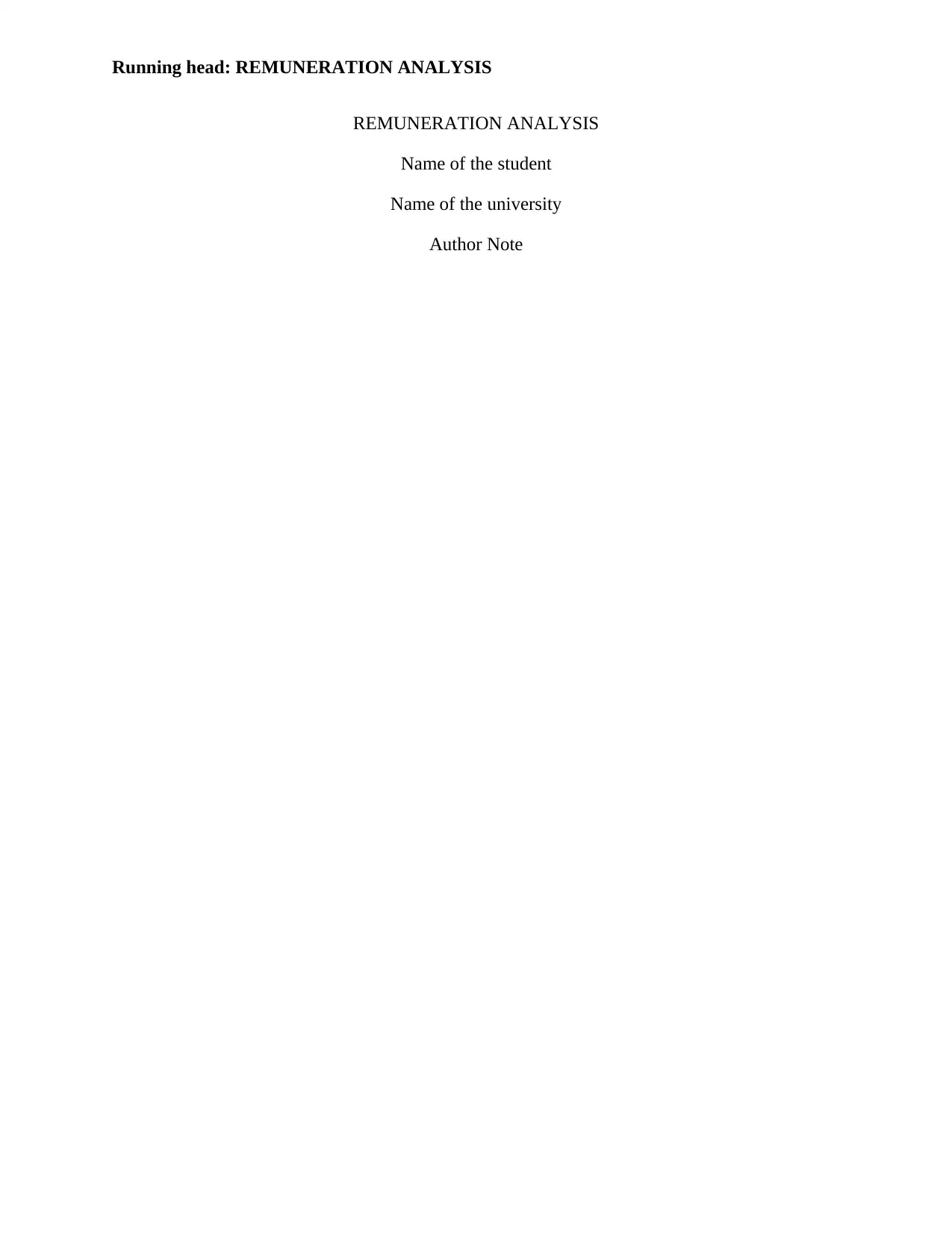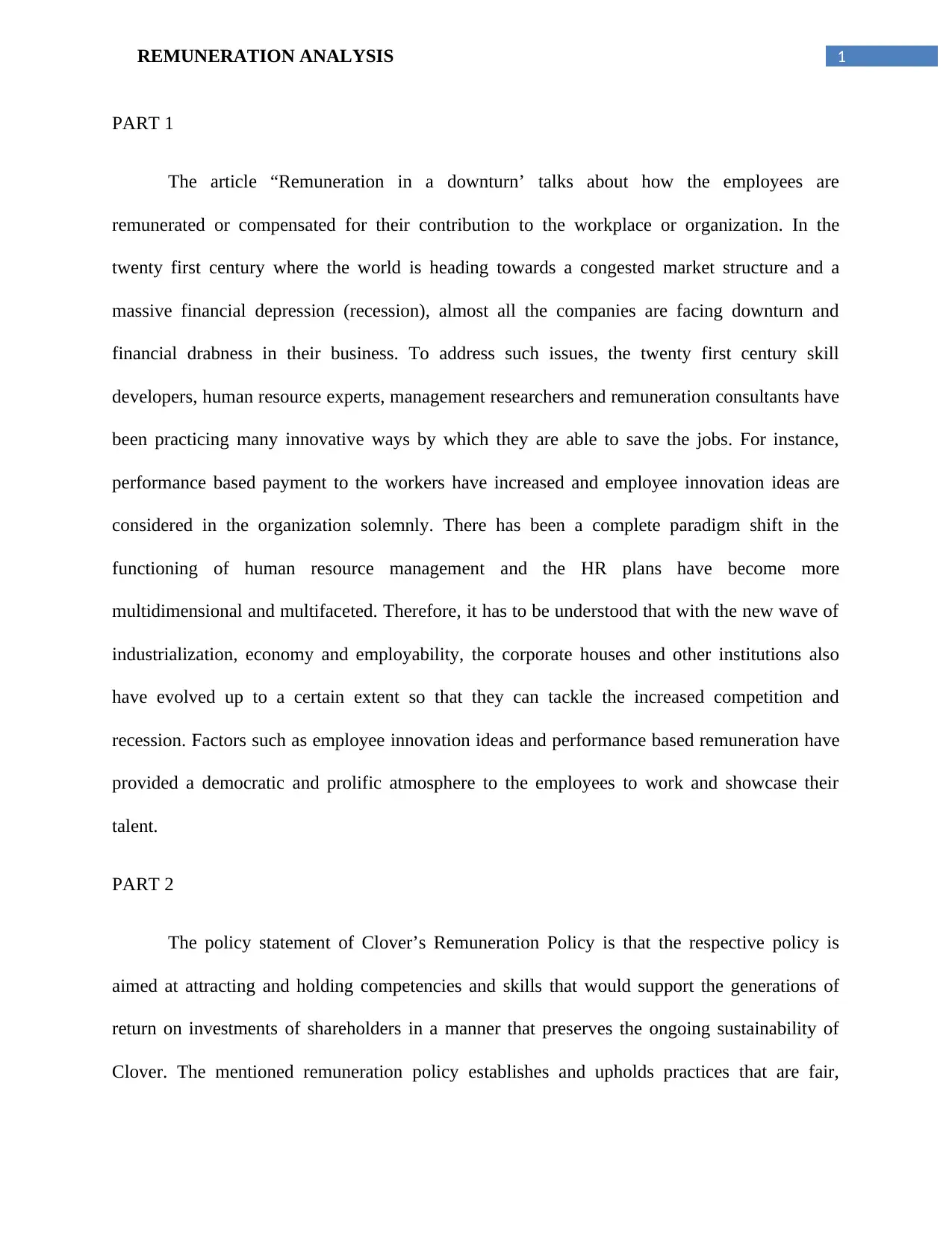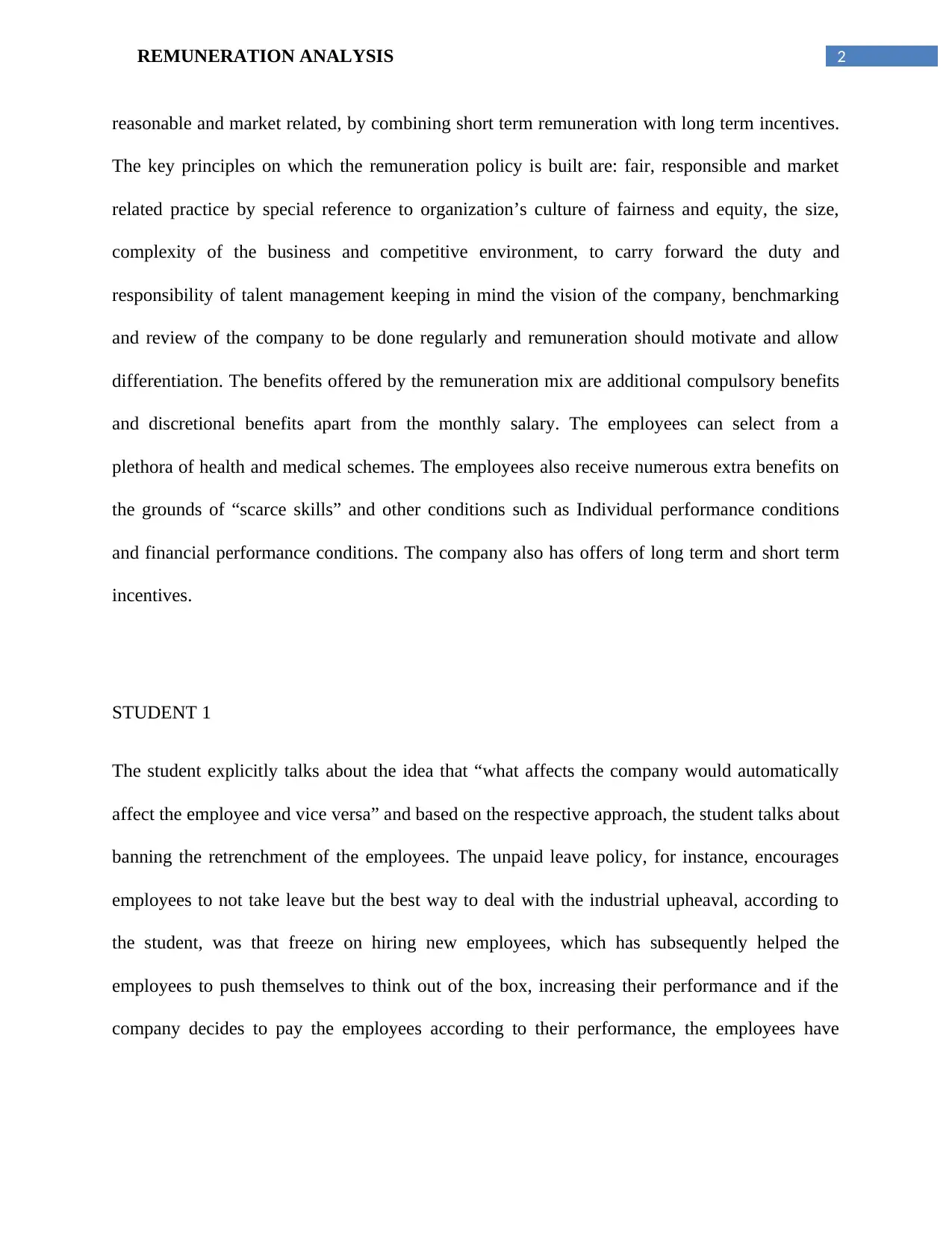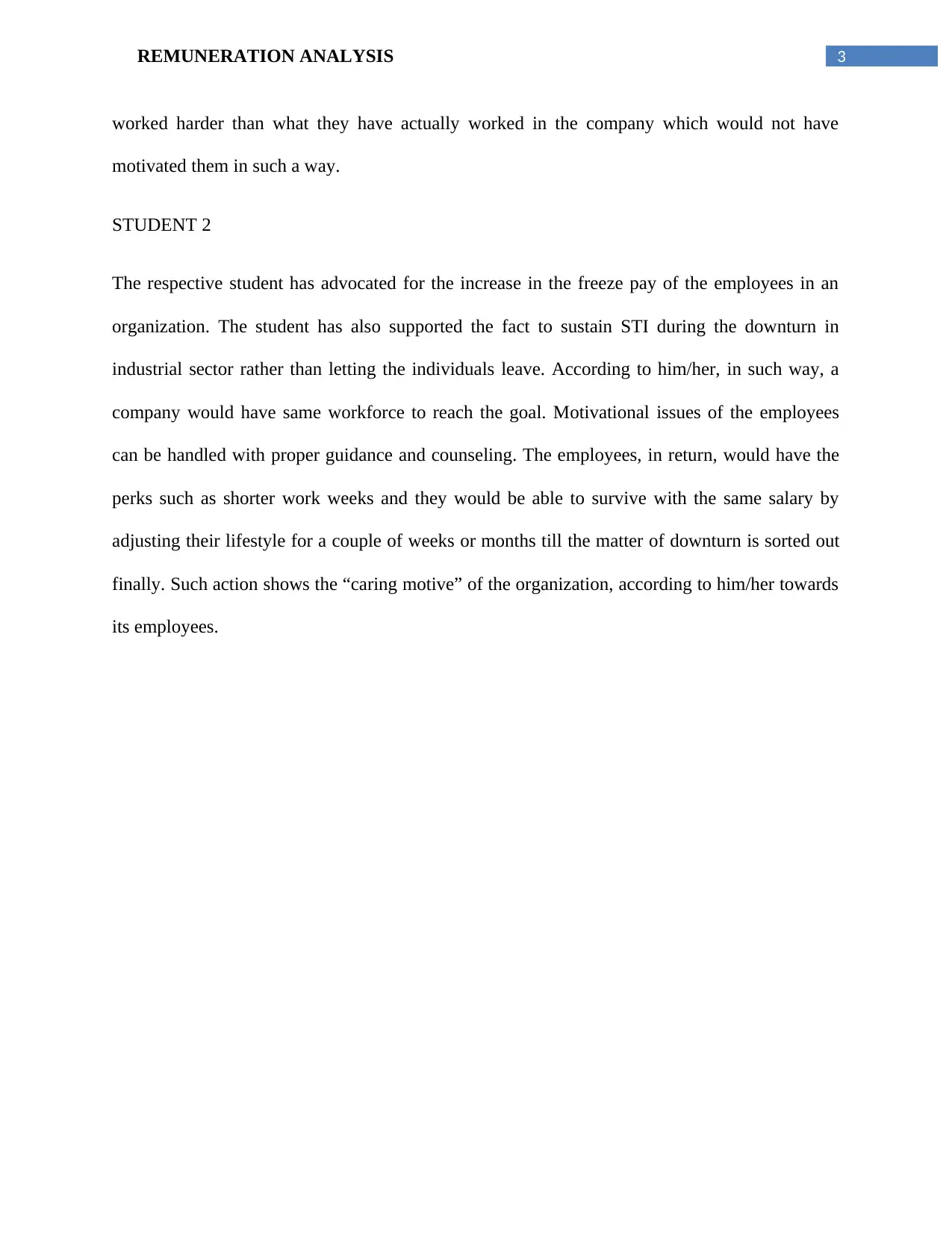Remuneration Analysis: Strategies, Policies, and Student Perspectives
VerifiedAdded on 2022/08/15
|4
|750
|34
Report
AI Summary
This report analyzes Clover's remuneration policies and provides insights into employee compensation strategies during economic downturns. Part 1 discusses remuneration trends, performance-based payments, and the evolving role of human resource management. Part 2 examines Clover's remuneration policy, which aims to attract and retain talent through a mix of short-term and long-term incentives, considering factors like market competitiveness and employee performance. The report also includes perspectives from two students on how to address remuneration challenges, such as preventing retrenchments, freezing pay, and motivating employees during difficult times. Student 1 emphasizes avoiding layoffs through measures like unpaid leave and hiring freezes, while Student 2 suggests strategies like pay freezes and counseling to maintain workforce morale and motivation. The report provides a comprehensive overview of remuneration strategies in a business context.
1 out of 4











![[object Object]](/_next/static/media/star-bottom.7253800d.svg)